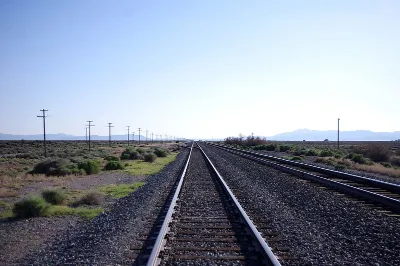A new ambitious plan to connect India with the Middle East and ultimately Europe is a dramatic game changer for the region and all the players involved.
During the G20 summit, which took place in New Delhi in September 2023, a historic and transformative initiative was unveiled by the leaders of several influential nations, including France, Germany, India, Italy, Saudi Arabia, the United Arab Emirates (UAE), the United States, and the European Commission. This groundbreaking endeavor, known as the India-Middle East-Europe Economic Corridor (IMEC), promises to reshape global trade and investment dynamics.
IMEC is a visionary project that encompasses two major corridors: an eastern corridor connecting India to the United Arab Emirates, Saudi Arabia, Jordan, and Israel, and a northern corridor that links these Middle Eastern nations to Europe. These corridors are poised to complement existing road and maritime transport routes, ushering in a new era of enhanced connectivity and economic integration between the continents of Asia and Europe.
But if Washington wants to circumvent Chinese influence, this corridor will need to extend to the east and encompass South Korea, Japan, Singapore, Taiwan, and Thailand. These countries are essential part of the puzzle that will allow the US to maintain ongoing competition with China.
This ambitious initiative will encompass a range of vital components, including energy infrastructure, extensive railway networks, high-speed data cables, and strategically optimized shipping lanes. By doing so, IMEC aims to streamline and expedite the flow of goods, services, and information between Asia and Europe, fostering unprecedented levels of trade and cooperation.
The competition between IMEC and the BRI is emblematic of the broader rivalry between the United States and China for influence and dominance on the world stage.
The participating countries in the IMEC initiative represent a staggering 40 percent of the world’s population and command roughly 50 percent of the global economy. This underscores the profound significance of this corridor in the global economic landscape, making it a linchpin of international trade and collaboration.
Notably, IMEC will heavily rely on the well-developed seaports, robust road networks, and efficient logistics hubs of the UAE and Saudi Arabia. This reliance will elevate the strategic importance of these Gulf Arab states as critical nodes in the intricate web of global trade routes, solidifying their positions as pivotal players in the world’s economic and geopolitical arena.
In essence, IMEC represents a monumental leap forward in the pursuit of enhanced international cooperation, economic growth, and global connectivity. It stands as a testament to the power of collaborative endeavors among nations with shared goals, and its impact is set to reverberate across continents, fostering prosperity and progress for generations to come.
Examining the Asia-Middle East-Europe corridor, necessitates delving into the complex landscape of great power competition, particularly within the context of the emerging “new Cold War” between the United States and China. The Biden administration’s strong endorsement of IMEC is underpinned by a multifaceted strategic calculus, encompassing reassurance of US allies and partners in the Middle East, as well as offering a counterpoint to China’s ambitious BRI. This intricate geopolitical dance carries profound implications for the global order.
The United States sees IMEC as a legitimate way to solidify its commitment to the Middle East, an essential region of geostrategic significance. In an era marked by shifting alliances and global recalibration, Washington aims to underscore its enduring role as a reliable partner in the Middle East. IMEC serves as a tangible manifestation of this commitment, demonstrating US dedication to bolstering regional stability and economic development.
This geopolitical contest is particularly pronounced in the Middle East, where Gulf Arab states hold central roles in the BRI’s expansive vision. The alignment between Saudi Arabia’s Vision 2030, along with the economic diversification agendas of other Gulf Cooperation Council (GCC) members, and the BRI underscores the depth of China’s engagement in the region. Chinese investments in infrastructure, energy, and technology partnerships have fostered closer ties between Beijing and traditionally Western-aligned Arab states, as well as Israel.
For Washington, this burgeoning partnership between China and historically pro-Western nations in the Middle East is a cause for concern. It has led the United States to undertake strategic efforts to counterbalance China’s growing geoeconomic influence in the region. IMEC, with its emphasis on connectivity and trade, emerges as a viable alternative and a means to offer Middle Eastern countries an alternative path that aligns more closely with Western values and interests.
The corridor could be a boon for world trade as it stands now. Extending the project eastward could advance American strategic interests to a much greater extent.
In essence, the competition surrounding IMEC is not merely about infrastructure projects and economic corridors; it is a reflection of the broader struggle for geopolitical supremacy in an increasingly multipolar world. The United States’ support for IMEC underscores its commitment to maintaining influence in the Middle East and offers a compelling counter-narrative to China’s expanding reach, setting the stage for a new chapter in global great power rivalry.
